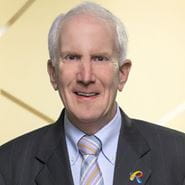A Capital:
- is a city that is the official seat of government;
- reflects the history, aspirations and democratic traditions of its citizens;
- is a place to remember and explore our collective past, showcasing significant milestones, objects and symbols through museums, historic sites, heritage buildings and stories;
- is a place to celebrate the present;
- is a location of festivals, ceremonies, democratic processes and visits by important dignitaries;
- is a place to envision and realize the future;
- is a centre for advancing cultural arts, education, technology, recreation and athletics, conservation and preservation and justice; and
- is a symbol of the people to which it belongs, their way of government and way of life.
The Capital as a Seat of Government
A Capital city is where the three components, known as the "seat of government" are located. The three components are:
Political
The elected representatives who make laws and policy and work in the Legislative Building (or City Hall for municipal government).
Administrative
The public servants who draft policies and laws and administer government services work in government offices.
Judicial
The judges and lawyers in courts who uphold the laws as part of the legal system and work in the courthouse.
Our system of government is a constitutional monarchy and a parliamentary democracy. In Canada, the head of state is The King and his representatives who act on his behalf. Each Capital in Canada has a vice-regal representative.
Canada has one federal Capital – Ottawa, Ontario – 10 provincial capitals and three territorial capitals.
Our Political System
Canada's political system has three main components:
Parliamentary Democracy
Canada's system of government has three branches of Parliament; Governor General, House of Commons and the Senate, that debate laws before they vote on them. The monarch appoints the Governor General as her representative on the advice of the Prime Minister. The Governor General appoints the senators to represent regions on the advice of the Prime Minister. The members of the House of Commons, however, are elected by the people to represent them in their ridings, therefore creating a parliamentary democracy. This system of "responsible government" means the ministers must retain the confidence of a majority of the elected members in the House of Commons (federal) or Legislative Assembly (provincial).
Federal State
There are two concurrent jurisdictions in Canada: the central government in Ottawa and the 10 provincial governments. These jurisdictions are "co-sovereign," in that each has exclusive constitutional responsibilities as well as some shared ones; together they make up the Canadian State. The three territories, while receiving their authority from the Parliament of Canada, have been granted the right to exercise many powers similar to those of provinces. Their form of government continues to evolve.
Constitutional Monarchy
The Canadian Head of State is a hereditary monarch, His Majesty King Charles III, King of Canada, who reigns over Canada's parliamentary democracy and federal state. The King is personally represented by the Governor General for Canada as a whole and by the Lieutenant Governor in each of the 10 provinces; they carry out most of his functions as Head of State. Territories are under federal jurisdiction; they do not have Crown representatives. Territorial governments are instead headed by commissioners who are appointed by the federal government, an authority the commissioner represents in the territory.
Visit Canadian Heritage to learn more about the Canadian Monarchy.








